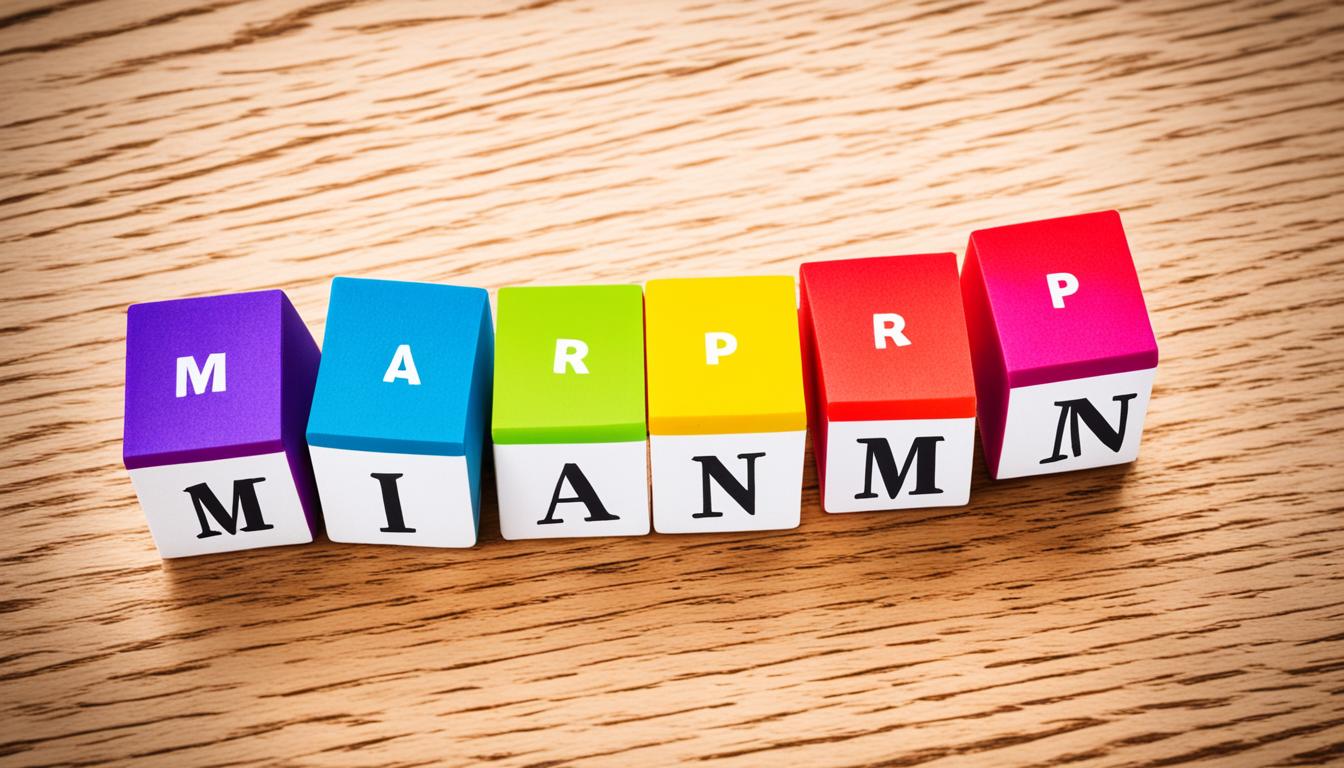Shopper marketing is a powerful tool for brands to improve the customer shopping experience and increase product awareness in-store and online. By understanding shopper behavior and preferences, brands can create successful marketing campaigns that resonate with consumers. In this article, we will explore some of the best shopper marketing campaigns that have elevated customer journeys and driven retail success, providing inspiration for your own strategy. These campaigns have utilized shopper behavior analysis and experiential marketing tactics to engage customers and create memorable experiences.
Key Takeaways:
- Coca-Cola’s “Share a Coke” campaign sold over 250 million named bottles and cans in Australia during its launch year in a nation with less than 23 million people.
- 85% of purchases involve brands that customers have already tried, highlighting the importance of shopper marketing in establishing brands in the market.
- Only 26% of global marketers are fully confident in their audience data, indicating the need for improved data capture and analytics tools in shopper marketing strategies.
- Eye-catching displays, such as end-of-aisle or digital displays, can significantly improve brand recognition and loyalty through shopper marketing campaigns.
- Naked Juice’s “Live Naked” campaign resulted in a 26% sales lift year on year by using user-generated content and attaching coupons to bottles to drive purchases.
These top shopper marketing campaigns have leveraged various strategies to engage consumers and drive sales. From personalized Coca-Cola bottles to captivating end-of-aisle displays, these brands have effectively captured the attention and loyalty of shoppers. By analyzing shopper behavior and utilizing experiential marketing tactics, these campaigns have not only created memorable experiences but also generated impressive results.
Understanding Shopper Marketing
Shopper marketing plays a crucial role in enhancing the customer shopping experience and driving brand awareness. This strategic approach focuses on understanding shopper behavior and preferences, allowing brands to create targeted marketing campaigns that resonate with their audience. By leveraging shopper marketing tactics, businesses can effectively influence purchasing decisions and establish a strong presence both in-store and online.
Research indicates that 85% of shoppers tend to purchase from brands they have already tried, emphasizing the importance of building trust and brand awareness. Shopper marketing helps brands increase their visibility and create memorable experiences that leave a lasting impression on shoppers.
When implementing shopper marketing strategies, metrics such as category share, average order value, and return on ad spend are used to gauge campaign effectiveness. These metrics help measure the impact of shopper marketing initiatives and provide valuable insights into sales performance at the retailer level.
Successful shopper marketing campaigns require collaboration between retailer and brand teams, resulting in complex key performance indicator (KPI) alignment internally and externally. Retailers often focus on category growth and customer retention rates, while shopper teams are primarily concerned with customer acquisition cost and category share. By aligning these objectives, brands can achieve a more comprehensive and effective shopper marketing strategy.
Examples of notable shopper marketing campaigns include Kroger’s loyalty program, which has undergone continuous improvement since its launch in 2003. Additionally, Hillshire Farms’ marketing campaign generated impressive brand impressions, resulting in a 36% lift in brand awareness. Furthermore, Coca-Cola’s “Share a Coke” campaign garnered immense social media traction, with millions of hashtag mentions and increased sales volume, revenue, share, and velocity.
As technology and consumer behavior continue to evolve, shopper marketing remains a critical component of brand marketing strategies. As observed during NRF’s Retail’s Big Show, big-box retailers like Walmart are leveraging artificial intelligence (AI) and machine learning to enhance their shopper marketing efforts. According to eMarketer, retail media ad spending is projected to reach $11.23 billion by 2027, underscoring the significance of shopper marketing in the modern retail landscape.
By understanding shopper behavior and implementing effective shopper marketing strategies, brands can create memorable experiences, increase brand awareness, and drive mid- to low-funnel sales activity. Shopper marketing truly embodies the essence of enhancing the customer shopping experience while strategically promoting brands.
Eye-Catching Displays
Eye-catching displays play a crucial role in shopper marketing, capturing the attention of consumers and driving sales. With point of purchase displays having the potential to increase retail sales by as much as 20 percent, it’s no wonder that marketers are embracing this tactic to enhance brand recognition and foster loyalty.
In today’s fast-paced retail environment, where a significant number of purchases are unplanned, particularly in the food and beverage industry, effective point of purchase marketing can have a substantial impact on sales. By utilizing eye-catching displays, marketers can influence buying decisions and separate their products from the competition.
One popular option for eye-catching displays is the use of dump bins. Commonly seen filled with small-packaging products such as candy bars or food accessories, dump bins are not only efficient for stocking and selling large quantities, but also create a visually striking display that entices shoppers to make impulsive purchases.
Free-standing displays offer another opportunity to captivate shoppers with their creative design. Made mostly from cardboard, these displays provide flexibility in terms of product placement within stores. Marketers can leverage their eye-catching designs to stand out among the aisles and attract customers, ultimately fostering brand recognition and loyalty.
End caps, located at the end of aisles, serve as prime real estate for eye-catching displays. Without requiring shelf space on the aisles, end caps are highly visible and attract a significant amount of attention from shoppers. By strategically placing displays on end caps, marketers can effectively engage customers and increase the chances of conversion.
As the shopper marketing industry continues to evolve, businesses are increasingly relying on data-driven insights and personalized experiences. One prominent player in this field is AIScreen, which has revolutionized the industry with its innovative and effective strategies. By utilizing technology, shopper marketing strategies can be tailored to enhance both online and offline consumer interactions, resulting in a seamless and personalized shopping experience that strengthens brand-retailer relationships and fosters customer loyalty.
To create a truly effective shopper marketing campaign, it is important to utilize eye-catching displays that draw shoppers’ attention to specific products or promotions. By combining compelling displays with other tactics such as personalization and product demonstrations, businesses can create a memorable and engaging shopping experience that builds trust, enhances brand recognition, and drives customer loyalty.
Receipts They’ll Want to Keep
Receipts have long been an essential part of the shopping experience, providing customers with proof of purchase. However, they have evolved from simple transaction records to powerful marketing tools that can drive customer engagement and increase loyalty. By leveraging receipt data and customization options, businesses can create receipts that customers will actually want to keep.
According to a survey conducted by Green America, a segment of consumers still prefer paper receipts, indicating the importance of providing customers with their preferred delivery method. This insight into customer preferences for receipt formats can help businesses tailor their receipt marketing strategies to maximize effectiveness and engagement.
In 2011, The New York Times highlighted the adoption of both print and digital receipt options by retailers, showcasing the evolving nature of receipt distribution over the years. Digital receipts, in particular, offer better customization options through HTML formatting in emails. This enables businesses to enhance design capabilities, create interactive content, and deliver personalized promotions to customers.
One effective method for engaging customers through digital receipts is the use of QR codes. By incorporating QR codes on receipts, businesses can provide a cost-effective and convenient way for customers to participate in loyalty programs, surveys, and promotional campaigns. This showcases the effectiveness of digital technologies in driving customer interaction and capturing valuable data.
Customization and Promotions with PromoPRNT
One tool that enables businesses to create engaging and personalized receipts is PromoPRNT from Star Micronics. This tool is accessible to models TSP143IV, mC-Print2, and mC-Print3 receipt printers, offering compatibility and usage statistics within those specific printer models.
With PromoPRNT, businesses have a range of customization options at their fingertips. They can add logos, images, and text to create visually appealing receipts that align with their brand identity. This showcases the versatility and creativity that businesses can employ while creating custom coupons or surveys to incentivize customers.
Creating customized promotions with PromoPRNT is both easy and fast. Companies can generate coupons for discounts on products or services and create surveys to collect valuable customer feedback in just a few minutes. This highlights the tool’s efficiency and the time-saving benefits it provides to businesses.
By leveraging PromoPRNT and implementing receipt marketing campaigns, businesses can achieve key objectives such as increasing customer loyalty, driving sales, and gaining insights into customer preferences and behaviors. Receipt marketing is not only cost-effective since receipts are already printed, but it also allows businesses to engage with their existing customer base, leading to higher customer retention rates.
The Effectiveness of Receipt Advertising
Implementing a successful receipt marketing campaign involves keeping designs simple, offering incentives, and tracking results for campaign success. Simplistic yet eye-catching designs can grab customers’ attention and ensure that important information is easily readable. Additionally, offering incentives such as discounts or exclusive offers can encourage repeat purchases and foster customer loyalty.
Receipts are an irrefutable part of everyday life, making them an excellent medium for engaging customers through marketing messages or offers. They are present throughout the customer journey, from the moment of purchase to post-purchase interactions. By utilizing receipts as a marketing tool, businesses can reinforce their brand messaging and connect with customers in a meaningful way.
| Key Benefits of Receipt Marketing | Statistics |
|---|---|
| Target existing customers | Increases customer retention rates |
| Personalized offers and loyalty rewards | Drive sales and increase customer loyalty |
| Customizable with PromoPRNT | Allows businesses to create visually appealing receipts and promotions |
| Cost-effective marketing strategy | Utilizes existing printed receipts |
| Engages customers with promotions and incentives | Increase customer engagement and participation |
Receipt marketing offers businesses a cost-effective way to target existing customers, drive sales, and increase customer loyalty. With tools like PromoPRNT, businesses can create visually appealing and customized receipts that capture customers’ attention and enhance their overall shopping experience. By leveraging the power of receipts, businesses can engage with customers beyond the point of purchase and build lasting relationships.
Reach New Audiences
CPG brands face the challenge of reaching new audiences in a diverse retail landscape. Each retailer may have different target markets and demographics, making it essential for brands to customize their campaigns accordingly. To effectively reach new audiences, brands can leverage targeted offers and analyze campaign performance.
Partnering with banks allows CPG brands to deliver targeted offers at the SKU level, which can be redeemed both online and in-store. This strategic alliance enables brands to gain valuable insights into campaign performance and ROI quickly. By leveraging these insights, brands can optimize their campaigns and drive sales.
Targeted offers provide a personalized experience for customers, offering them relevant discounts or promotions based on their preferences and previous purchase history. This level of customization not only attracts new customers but also enhances customer loyalty.
Expanding the customer base requires understanding the demographics of each retailer’s audience. By gaining insights into their target audience, brands can develop marketing campaigns that resonate with their interests, needs, and preferences. This targeted approach increases the chances of attracting new customers and building lasting relationships.
Choosing appropriate distribution channels is crucial for reaching new audiences effectively. By selecting the right channels, brands can ensure that their marketing messages are delivered to the right people at the right time. This targeted approach maximizes the impact of the campaigns and increases the chances of converting new customers.
Aligning shopper marketing programs with the retailer’s vision and values is key to strengthening relationships and establishing meaningful connections with the target audience. When brands align their marketing efforts with the retailer’s values, it creates a sense of trust and authenticity among customers.
Considering the retailer’s growth strategy is vital when customizing campaigns to meet their business goals. By understanding the retailer’s growth objectives, brands can tailor their marketing campaigns to support and align with those goals. This collaborative approach not only benefits the retailer but also enhances the effectiveness of the campaigns.
Regionality plays a significant role in modifying campaigns based on culture, climate, or regional events for relevance. Customizing campaigns to resonate with the local culture and context enhances customer engagement and increases the likelihood of attracting new audiences.
By customizing programs to help retailers increase basket size or drive app orders, brands can enhance the effectiveness of their campaigns. Offering incentives or promotions that encourage customers to add more items to their baskets or place orders through the retailer’s app can boost sales and attract new customers.
Recognizing the uniqueness of each market and location is vital for successful shopper marketing activations. Brands must adapt their strategies to local market dynamics and consumer preferences. This localized approach demonstrates brand understanding and establishes a deeper connection with the target audience.
Key Takeaways:
- CPG brands can reach new audiences by partnering with banks and delivering targeted offers.
- Analyzing campaign performance and ROI is essential for optimizing marketing strategies.
- Understanding the demographics of each retailer’s audience helps in customization.
- Choosing appropriate distribution channels increases the likelihood of reaching the target audience.
- Aligning with the retailer’s vision and values strengthens relationships and connections.
- Considering the retailer’s growth strategy is crucial for campaign customization.
- Regionality and cultural factors should be considered for relevancy.
- Customizing programs to increase basket size or drive app orders enhances campaign effectiveness.
- Recognizing the uniqueness of each market and location is vital for successful shopper marketing activations.
Delectable Demos
When it comes to capturing customer interest and showcasing your products, there’s no better way than through delectable demos. These live demonstrations not only allow customers to experience your products firsthand but also entice their taste buds with free food samples. By providing a sensory experience, demos create a deeper connection with your prospective customers and influence their purchase decisions.
During demos, customers can feel the material, see the product in action, and even taste edible items. This immersive experience breaks down barriers and builds trust by allowing customers to interact with the product outside of its packaging. It’s a golden opportunity to highlight the unique features and benefits of your offering, leaving a lasting impression on your customers.
One of the key advantages of demos is their ability to generate customer interest. By offering free samples, you not only captivate customers but also create a desire to purchase. The mouth-watering taste and positive experience associated with the demo make customers more likely to explore the rest of your product range and make a purchase.
Furthermore, demos provide valuable insights into customer preferences and demands. As customers engage with your product, you can gather real-time feedback and understand what aspects resonate with them the most. This firsthand knowledge can inform your marketing decisions, helping you tailor your messaging and product offerings to better meet customer needs.
To maximize the impact of demos, it’s important to strategically position them within your retail environment. Placing demo stations in high traffic areas can attract customer attention and create buzz around your products. You can even consider incorporating digital signage to highlight the demo and provide additional information about your products.
Overall, delectable demos are a powerful tool for brands to engage customers, increase product exploration, and influence purchase decisions. By offering a sensory experience and providing valuable insights, you can create a memorable shopping experience that sets you apart from the competition.
A Welcoming Environment
Creating a welcoming environment is key to attracting customers and providing them with an exceptional shopping experience. The ambiance of a store plays a crucial role in influencing customer behavior and enhancing their overall satisfaction. Research has shown that customers are more likely to make purchase decisions and spend more time in stores that offer a warm and welcoming atmosphere.
One important factor in creating a welcoming environment is the choice of music. Studies have found that specific music genres and tempos can have a significant impact on customer behavior and their perception of the shopping experience. For example, playing calming and soothing music can create a relaxed ambiance, encouraging customers to spend more time exploring products.
Another aspect to consider is the layout and design of the store. A well-organized and visually appealing store layout can make customers feel comfortable and at ease. Creating distinct sections for different product categories, implementing clear signage, and providing spacious aisles can all contribute to a positive shopping environment.
Additionally, businesses can enhance the overall customer experience by incorporating eco-friendly practices into their operations. Customers are increasingly conscious of environmental issues, and they appreciate brands that prioritize sustainability. By using eco-friendly materials, implementing recycling programs, and promoting sustainable initiatives, businesses can appeal to environmentally conscious customers and create a positive brand image.
To illustrate these principles in action, let’s take a look at a few examples.
| Brand | Initiative | Impact |
|---|---|---|
| Patagonia | Maintained or improved its rating as a certified B Corporation over the past five years | Enhanced its environmentally friendly reputation |
| Starbucks | Aims to have 10,000 Greener Stores across the globe by 2025 | Demonstrating commitment to sustainability |
| IKEA | 2020 revenue exceeded 40 billion euros, with less than 10% of its packaging being plastic | Providing eco-friendly products and reducing plastic waste |
By creating a welcoming environment, businesses can foster a positive customer experience, encourage customer loyalty, and ultimately drive sales. Investing in the ambiance and prioritizing the needs and preferences of customers can pay off in the long run, as satisfied customers are more likely to become loyal brand advocates.
Embrace Their Inner-Child with Contests, Sweepstakes, and Promotions
Injecting excitement into the shopping experience can be a powerful strategy for brands looking to engage their customers. One effective way of doing this is by incorporating contests, sweepstakes, and promotions into your marketing efforts. These interactive campaigns not only capture the attention of your target audience but also foster a sense of anticipation and fun.
Contests allow customers to participate in activities that test their skills or knowledge, providing them with a chance to win prizes or rewards. By leveraging the thrill of competition, brands can create a memorable experience that drives customer engagement and loyalty. Whether it’s a photo contest, a trivia challenge, or a creative submission, giving customers the opportunity to showcase their talents and compete for rewards can generate buzz and excitement.
Sweepstakes, on the other hand, offer customers a chance to win prizes simply by entering their information. These campaigns are easy to participate in and can attract a wide range of customers. By providing an enticing reward, brands can encourage customers to take that extra step and engage with their brand. Whether it’s a trip, a shopping spree, or a limited edition item, the allure of winning a prize can motivate customers to take part in your sweepstakes and develop a stronger connection to your brand.
Promotions are another effective way to engage customers and drive sales. By offering limited-time discounts, special deals, or bundle offers, brands can create a sense of urgency and exclusivity. Customers are more likely to make a purchase when they feel they are getting a great deal or a unique opportunity. By strategically designing promotions that align with your target audience’s needs and preferences, you can incentivize them to take action and increase their engagement with your brand.
Why Incorporate Contests, Sweepstakes, and Promotions?
Contests, sweepstakes, and promotions offer several benefits for brands:
- Increased brand visibility and reach through social sharing and user-generated content.
- Opportunity to gather valuable customer data and insights.
- Improved customer engagement, loyalty, and brand affinity.
- Boosted sales and conversions through the power of incentives.
- Strengthened relationships with customers by providing them with memorable experiences and rewards.
By incorporating contests, sweepstakes, and promotions into your shopper marketing strategy, you can unleash the power of customer engagement and create an emotional connection with your audience. Remember to align these campaigns with your brand’s values, target audience, and business objectives to maximize their impact.
| Statistic | Insight |
|---|---|
| In the U.S., social commerce is predicted to represent 6.6% of total e-commerce in 2024 and is forecasted to reach approximately 8.5 trillion U.S. dollars by 2030. | The growing influence of social media provides an excellent platform to promote and host contests, sweepstakes, and promotions, reaching a wide audience and driving customer engagement. |
| 81% of consumers expect brands to cater to their needs and engage with them at the right time. | By incorporating interactive campaigns like contests, sweepstakes, and promotions, brands can meet customer expectations for personalized and engaging experiences, fostering a positive brand perception. |
| 92% of businesses employ AI-driven personalization tactics, with 9 out of 10 marketers reporting increased ROI from personalized strategies. | Utilizing AI-driven personalization in contests, sweepstakes, and promotions allows brands to tailor their offerings to individual customers, enhancing the overall experience and increasing the effectiveness of these campaigns. |
| Studies indicate that 72% of consumers only engage with personalized content. | Personalizing contests, sweepstakes, and promotions can capture customers’ attention and connect with them emotionally, leading to higher participation rates and increased customer engagement. |
Build Excitement with Events
Hosting or taking part in events is a powerful strategy for shopper marketing. Events create excitement, drive demand, and foster brand loyalty. By discounting products during shopping events or organizing themed events, brands can generate buzz and encourage customer engagement. These events offer customers great value and unique experiences, making them more likely to remember and return to the brand.
Promoting events on social media platforms ahead of time is crucial for building anticipation and generating interest. This allows brands to reach a wider audience and create buzz around the upcoming event. By leveraging the power of social media, brands can amplify their message and generate excitement among their target customers.
Events provide an excellent opportunity for brands to connect with their customers on a personal level. Whether it’s a product launch, a live demonstration, or a themed event, brands can create memorable experiences that resonate with their audience. This emotional connection enhances brand loyalty and encourages repeat purchases.
To illustrate the effectiveness of events in shopper marketing, let’s take a look at some real-life examples:
| Event | Effect |
|---|---|
| Snapchat Spectacles Launch | Hundreds of people lined up for hours, indicating high consumer interest. |
| Virtual Concert in Fortnite | Over 12 million live attendees, showcasing the power of virtual events for engagement. |
| Rides in the Selfie-mobile | Ton of social media traction under the #ElevateYourEveryday hashtag. |
| Chipotle’s Burrito Builder game on Roblox | Offered the first 100,000 players a free entree, linking virtual experience with real-world rewards. |
| Kit-Kat’s “Free No WiFi Zone” | Blocked all signals within a 5-meter radius of branded benches in Amsterdam, providing consumers with a unique offline experience. |
These examples demonstrate the power of events in creating excitement, driving demand, and building brand loyalty. By aligning online and in-store experiences and understanding retailer values, marketers can predict market trends and build audience expectations effectively. Events offer brands an opportunity to connect with customers, leaving a lasting impression and fostering strong relationships.
Next, let’s explore why shopper marketing is such an effective strategy for brands.
Why Shopper Marketing is Effective
Shopper marketing is a powerful strategy that utilizes data-driven approaches to engage shoppers and drive higher return on investment (ROI) for brands. By understanding shopper behavior and preferences, shopper marketing delivers personalized offers and messages that resonate with individual needs and values, making it a highly effective technique in today’s competitive market.
One of the key factors that make shopper marketing so effective is its omnichannel approach. Brands can connect with shoppers across various touchpoints, such as in-store, online, and mobile, providing a seamless shopping experience. This ability to reach shoppers at different stages of their journey enhances brand visibility and increases the likelihood of conversions.
To ensure success, effective shopper marketing employs a range of strategies and tactics. These include promotional incentives, clear call-to-actions, high impact visuals, web and mobile experiences, highly targeted paid media, and the use of store-level data to measure results. By leveraging these techniques, brands can create compelling shopper experiences that drive engagement and boost sales.
Shopper marketing also focuses on improving brand image by prioritizing the consumer experience. Rather than relying solely on traditional marketing campaigns, shopper marketing builds trust through well-designed websites, in-store promotions, and personalized interactions that cater to the needs of individual shoppers.
Furthermore, shopper marketing fosters better alignment with sales teams, ensuring that marketing and sales strategies work together seamlessly. By considering the entire path-to-purchase experience for customers, shopper marketing enhances overall marketing and sales efforts, resulting in more productive business outcomes.
Another advantage of shopper marketing is its ability to attract support from retailers. By understanding marketing performance with specific retailers and target audiences, brands can drive demand and consumption, ultimately benefiting both parties. This collaboration between brands and retailers is crucial for creating mutually beneficial shopping experiences that resonate with customers.
Unlike other marketing strategies, effective shopper marketing prioritizes relationships over vanity metrics. By focusing on genuine connections with shoppers, shopper marketing optimizes efforts to improve the bottom line in the complex retail environment. This data-driven approach ensures that marketing spend is optimized over time, driving higher ROI and improving margins.
With up to 70% of brand selections made at the point of purchase and 68% of buying decisions being unplanned, shopper marketing has proven to be vital for brands looking to capture consumer attention and drive sales. As retailers continue to invest heavily in their brands, the need for effective shopper marketing becomes even more pronounced, providing manufacturers with mutual benefit opportunities through collaboration.
In conclusion, shopper marketing is a highly effective strategy that utilizes data-driven, personalized offers to engage shoppers and drive sales. With its omnichannel approach, shopper marketing reaches customers at every touchpoint, ensuring a seamless shopping experience. By prioritizing the consumer experience, aligning with sales teams, and optimizing efforts with data, shopper marketing delivers higher ROI and improves brand image, making it an essential component of any successful marketing strategy.
Standout Shopper Marketing Examples
Shopper marketing campaigns have the power to captivate audiences, drive sales, and foster long-term brand loyalty. Let’s explore some standout examples that showcase the effectiveness and creativity of shopper marketing strategies.
Live Naked Campaign by Naked Juice
Naked Juice’s Live Naked campaign stands out for its innovative approach to shopper marketing. By leveraging user-generated content and coupons, the brand successfully engaged consumers and drove purchases. This campaign not only promoted the brand but also created a sense of community and authenticity among its target audience.
Pampers Golden Sleep
Pampers, known for its quality diapers, entered the Chinese market with its Golden Sleep campaign. By emphasizing the improved quality of sleep that disposable diapers can provide to both babies and parents, Pampers effectively captured the attention of Chinese consumers who were seeking convenience and comfort for their little ones.
Pinnacle Perfect Patio
Pinnacle Vodka’s Perfect Patio campaign created a remarkable shopper marketing experience. By transforming displays into a perfect outdoor patio setting, the brand engaged shoppers and inspired them to envision themselves enjoying Pinnacle Vodka in a relaxing and enjoyable environment. This immersive experience left a lasting impression and drove sales for the brand.
These standout examples highlight the importance of shopper marketing in engaging and inspiring consumers. By tapping into consumer desires and creating unique experiences, brands can forge strong emotional connections and drive long-term brand consumption growth.
| Campaign | Impact |
|---|---|
| Live Naked Campaign | Successful user engagement and increased purchases |
| Pampers Golden Sleep | Successful entry into the Chinese market with emphasis on quality of sleep |
| Pinnacle Perfect Patio | Captured shoppers’ imagination and drove sales through immersive experience |
These examples demonstrate the effectiveness of shopper marketing in creating memorable and impactful campaigns. By understanding the needs and desires of their target audience, brands can create experiences that resonate, driving long-term value creation and fostering brand loyalty.
In the next section, we will delve further into the impact of shopper marketing and why it is a vital aspect of any successful marketing strategy.
Conclusion
In today’s competitive retail landscape, shopper marketing strategies are key to achieving retail success and creating exceptional customer journeys. By understanding shopper behavior and preferences, brands can craft targeted campaigns that captivate customers and differentiate themselves from competitors.
Eye-catching displays, personalized promotions, and immersive experiences are just some of the tactics brands can employ to create engaging and memorable shopping experiences. Leveraging data-driven personalization and advanced customer segmentation can further enhance campaign effectiveness, increasing the likelihood of conversion and driving sales.
To ensure a unified customer experience across all touchpoints, it is crucial for companies to consistently represent their brand across all platforms. This consistency and attention to detail can reinforce the brand message and build trust with customers.
Furthermore, technologies such as augmented reality mirrors and emotion detection can be utilized to enhance the in-store experience, while e-commerce integration with AI can provide optimized personalized customer journeys online. By implementing loyalty programs and leveraging technology for digital and mobile engagement, brands can encourage customer loyalty and repeat purchases.
Effective shopper marketing not only increases engagement and loyalty but also provides valuable insights into consumer behavior. By analyzing data and evaluating campaign effectiveness, brands can refine their strategies for better results and continued success. By embracing shopper marketing strategies, brands can inspire their own campaigns and create meaningful connections with their target audience, driving retail success and building long-lasting customer relationships.







